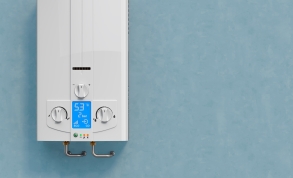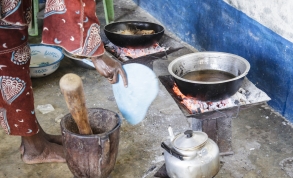Abstract
The Victorian Healthy Homes Program was a randomised controlled trial of energy efficiency and thermal comfort upgrades of low-income households in Victoria, Australia. The project was funded by the Sustainability Fund of the Victorian Government and by Sustainability Victoria. Analysis indicated that a relatively minor home upgrade (average AU$2,809) had wide-ranging benefits over the winter period. Indoor temperature was significantly increased, and this was matched by subjective experience of householders, who reported greater warmth and reduced condensation. The upgrade resulted in significantly lower gas use, meaning lower energy bills and reduced greenhouse gas emissions. There were benefits in health, with reduced breathlessness, and improved quality of life, particularly in mental health and social care. Health benefits translated to cost savings, with AU$ 887 per person saved in the healthcare system over winter. These cost savings outweighed energy savings: for every AU$ 1 saved in energy costs, more than AU$ 10 is saved in healthcare costs. Cost-benefit analysis indicated that the upgrade is cost-saving within 3 years.
Intervention Overview
The Victorian Healthy Homes Program was funded by the Sustainability Fund of the Victorian Government and by Sustainability Victoria. Low-income householders with a chronic health or social care need were eligible. All participating households received a free home upgrade, which was focussed on winter warmth and could include insulation, draught-sealing, window coverings, and efficient heating appliances. Each household also received a Residential Efficiency Scorecard assessment, which quantified the home’s energy efficiency and helped to guide choice of upgrade type. The upgrades took place between 2018 and 2021, across both metropolitan (western Melbourne) and regional (Goulburn Valley) areas. For the purposes of the research trial, households were randomised into either intervention (upgrade before winter) or control (upgrade after winter) groups. A total of 488 control households and 276 intervention households received the upgrade as allocated (the COVID-19 pandemic disrupted access to homes, meaning many intervention upgrades could not be completed before winter in the 2020 study year).
Outcomes
Outcomes from the intervention and control groups were compared over the 3-month winter period. Primary outcome was indoor temperature (measured every 30 minutes using a data logger installed in the main living area). Mean average indoor temperature was increased by 0.33°C (p=0.022), with greatest effects in the morning, when temperatures are lowest. Exposure to cold temperatures (<18°C) was reduced by 43 minutes per day. Gain in thermal comfort was obtained despite a significant reduction in gas use (2.326 GJ) and a small reduction in electricity use (81.9 kWh) over winter in upgraded homes. These energy savings translate to a reduction of 0.128 t CO2-e per upgrade for gas and 0.078 t CO2-e for electricity.
Health outcomes were a very important part of the trial. Analysis showed no significant difference between the groups in asthma control or in COPD symptoms over winter, though the intervention group did have a reduction in breathlessness relative to controls. In terms of quality of life, the intervention group had significantly higher self-reported mental health scores than controls (p=0.026) and fewer social care needs (p=0.009). Social care needs were assessed using the ASCOT (Adult Social Care Outcomes Toolkit), which assesses aspects of quality of life that can be affected by social care, including control over daily life, personal care, food and drink, safety, and social participation. Moreover, the intervention group had fewer days absent from usual activities (average 5.4) than the control group (average 7.3). Total healthcare costs were lower for the intervention (average AU$ 3394) than control (average AU$ 4172) group over winter.
Feasibility and potential impact of scale-up
The Victorian Healthy Homes Program demonstrated how a relatively minor home insulation upgrade can improve health outcomes and reduce emissions through energy efficiency. These results are potentially applicable to other countries with inefficient energy housing stock.
References
Academic profile / relevant organisation’s page
- Sustainability Victoria. (2022). The Victorian Healthy Homes Program: research findings. Available online: https://www.sustainability.vic.gov.au/research-data-and-insights/resear…
Supplementary information
- Page, K., Hossain, L., Wilmot, K., Kim, Y., Liu, D., Kenny, P., van Gool, K. & Viney, R (2022). Evaluation of the Victorian Healthy Homes Program – Final Report. Sydney: University of Technology Sydney.
- The World Bank. (2019). CO2 Emissions per capita. Available online: https://data.worldbank.org/indicator/EN.ATM.CO2E.PC?locations=AU&most_r…
- Wood, T., & Dundas, G. (2020). Flame out: the future of natural gas. Grattan Institute.
Contact
- Toby Cumming, Sustainability Victoria, Email: [email protected]



